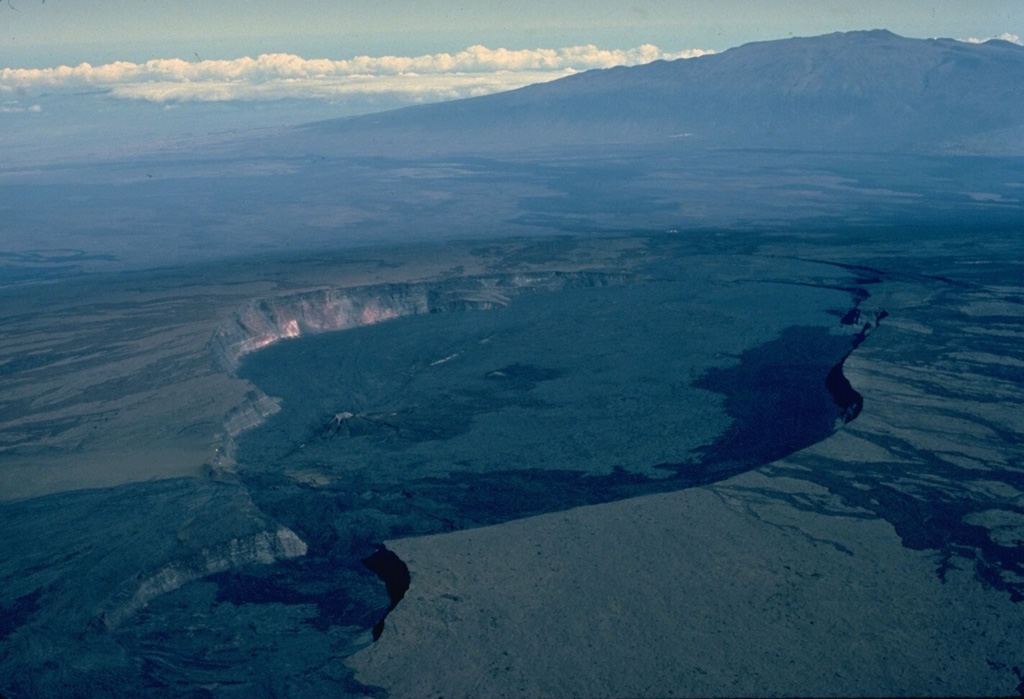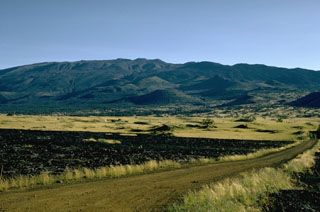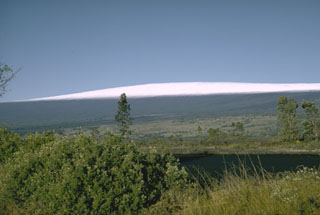Image GVP-03533

Calderas at the summits of basaltic shield volcanoes, such as this one at Hawaii's Mauna Loa volcano differ from those formed at more silicic stratovolcanoes. The 2.4 x 4.8 km wide Mokuaweoweo caldera, seen here from the south with Mauna Kea volcano in the background, formed when the summit collapsed after large amounts of magma were siphoned away from the summit region by flank eruptions or lava intrusions. The elongate, scalloped form of the caldera reflects both the influence of rift systems and the incremental growth of the caldera.
Copyrighted photo by Katia and Maurice Krafft, 1984.
Copyrighted image used with permission. All Rights Reserved. Contact photographer for any usage requests.

Mauna Kea

Mauna Loa
